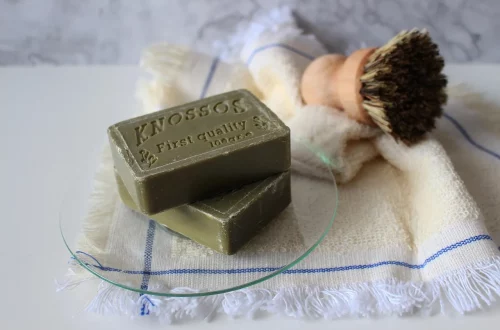
Effective Leg Adductor Exercises for Strength and Stability
Building strength and stability in the legs is crucial for overall fitness, athletic performance, and everyday activities. Among the key muscle groups in the legs, the adductors often receive less attention compared to the quadriceps and hamstrings. These muscles, located on the inner thigh, play an essential role in stabilizing the pelvis, supporting hip movement, and maintaining balance. Strengthening the adductors not only enhances athletic performance in sports that require lateral movement—such as soccer, basketball, and tennis—but also reduces the risk of injuries that can occur from weak or imbalanced leg muscles.
Incorporating effective leg adductor exercises into your workout routine can lead to improved lower body strength and stability, which are vital for both athletes and fitness enthusiasts alike. Whether you’re looking to enhance your performance in sports or simply wish to maintain your functional fitness, focusing on the adductor muscles can yield significant benefits. These exercises are not only effective for building muscle strength but can also aid in improving flexibility and mobility, contributing to a well-rounded fitness regimen.
Understanding how to properly target these muscles will allow you to maximize your workouts and achieve your fitness goals. Let’s delve deeper into some of the most effective exercises designed specifically for strengthening the leg adductors.
Understanding the Anatomy of the Adductor Muscles
The adductor muscles consist of a group of five muscles located on the inner thigh: the adductor longus, adductor brevis, adductor magnus, gracilis, and pectineus. Collectively, they are responsible for the adduction of the thigh, which means pulling the leg toward the body’s midline. This action is crucial for various movements, including walking, running, and lateral motions in sports.
Understanding the anatomy of these muscles can help you appreciate their function and the importance of strengthening them. The adductor longus and adductor brevis are primarily responsible for flexing the thigh at the hip joint, while the adductor magnus plays a significant role in both adduction and extension of the thigh. The gracilis, though slender, contributes to the adduction and also assists in flexing the knee. Lastly, the pectineus is often considered a bridge between the hip flexors and adductors, facilitating movements in both directions.
Strengthening these muscles can significantly enhance overall leg stability and athletic performance. When the adductors are weak, it can lead to imbalances that may contribute to injuries, especially in the hips and knees. For athletes, strong adductors are essential for effective lateral movement, pivoting, and quick changes in direction. For everyday individuals, having strong adductors can improve balance, coordination, and overall mobility, making daily activities easier and safer.
Incorporating exercises targeting these muscles into your routine can lead to better performance in sports and physical activities, as well as a lower risk of injury. As you focus on these exercises, remember to maintain proper form to maximize effectiveness while minimizing the risk of strain.
Effective Exercises for Leg Adductor Strength
When it comes to strengthening the adductor muscles, there are numerous exercises you can incorporate into your fitness routine. Some of the most effective exercises include:
1. **Sumo Squats**: This variation of the squat emphasizes the inner thighs, making it an excellent choice for targeting the adductors. Stand with your feet wider than shoulder-width apart and your toes pointed slightly outward. Lower your body into a squat, keeping your chest up and knees tracking over your toes. Push through your heels to return to the starting position.
2. **Side Lunges**: This exercise not only targets the adductors but also works the glutes and quadriceps. Start by standing upright, then take a large step to the side with your right foot, bending your right knee while keeping the left leg straight. Push off the right foot to return to the starting position and repeat on the left side.
3. **Adductor Machine**: If you have access to a gym, the adductor machine is a great way to isolate and strengthen the adductor muscles. Adjust the seat to fit your height, sit down, and place your legs against the pads. Squeeze your legs together against the resistance, then slowly return to the starting position.
4. **Lateral Band Walks**: Utilizing a resistance band, this exercise helps activate the adductors and improve stability. Place a resistance band around your thighs, just above your knees. With your feet shoulder-width apart, take small steps to the side, maintaining tension in the band throughout the movement.
5. **Copenhagen Plank**: This advanced exercise targets the adductors while also engaging the core. Begin in a side plank position with your feet stacked. Place the top leg on an elevated surface, such as a bench or step. Lower your hips towards the ground and then lift them back up, engaging the adductor muscles of the top leg.
To achieve the best results, aim to perform these exercises at least two to three times a week, ensuring you include a warm-up and cool-down to prevent injury. Always focus on maintaining proper form to maximize the effectiveness of your workouts and to keep your body safe from strain.
Incorporating Flexibility and Mobility Training
While strength training is crucial for building muscle, flexibility and mobility are equally important for overall leg health and performance. The adductors, like any other muscle group, can become tight and limited in range of motion, which can hinder athletic performance and lead to injuries.
Incorporating stretching and mobility exercises for the adductor muscles can help improve flexibility, enhance muscle recovery, and prevent injuries. Some effective stretches for the adductors include:
1. **Butterfly Stretch**: Sit on the floor with the soles of your feet together and your knees dropped out to the sides. Hold your feet with your hands and gently press your knees down toward the ground to deepen the stretch.
2. **Side Lunge Stretch**: Stand with your feet wide apart. Shift your body weight to one side while bending that knee and keeping the other leg straight. Hold the position to feel a stretch along the inner thigh of the straight leg.
3. **Kneeling Adductor Stretch**: Begin in a kneeling position with one leg extended to the side while the other knee remains on the ground. Lean towards the extended leg, feeling the stretch in the inner thigh.
4. **Seated Straddle Stretch**: Sit on the ground with your legs extended wide apart. Lean forward gently, reaching toward your toes or the ground. This stretch helps lengthen the adductors and improve hip mobility.
Incorporating these stretches into your routine after strength training or on rest days can significantly improve your flexibility and range of motion. Improved flexibility in the adductors can enhance overall lower body performance and help prevent injuries caused by muscle tightness.
Conclusion: The Importance of Balanced Leg Training
Incorporating leg adductor exercises into your fitness routine is essential for developing strength, stability, and flexibility in the lower body. These exercises not only enhance athletic performance but also contribute to functional fitness for everyday activities. By understanding the anatomy of the adductors and focusing on effective exercises, you can improve your overall leg strength and reduce the risk of injuries.
Remember, a balanced fitness program should include strength training, flexibility work, and adequate recovery time. As you work on strengthening your adductors, be mindful of your body and listen to its signals. Ensure you maintain proper form to prevent strain and maximize the benefits of your workouts.
Always consult a healthcare professional before starting any new exercise program, especially if you have existing health concerns or injuries. This article is not intended as medical advice and should not replace professional guidance.
By prioritizing leg adductor strength and flexibility, you can achieve better performance in sports, improve your everyday functional movements, and enjoy a healthier, more active lifestyle.




